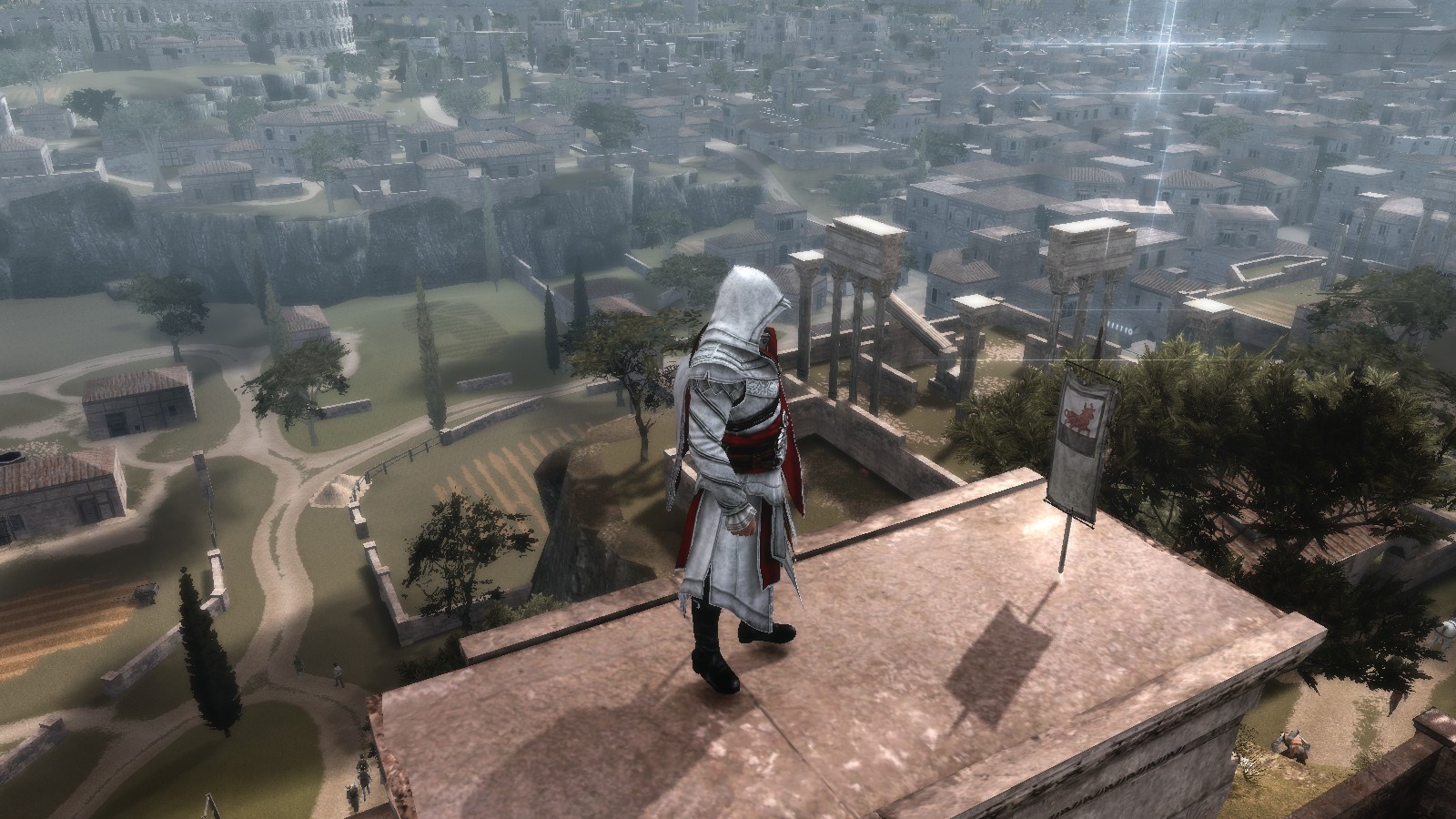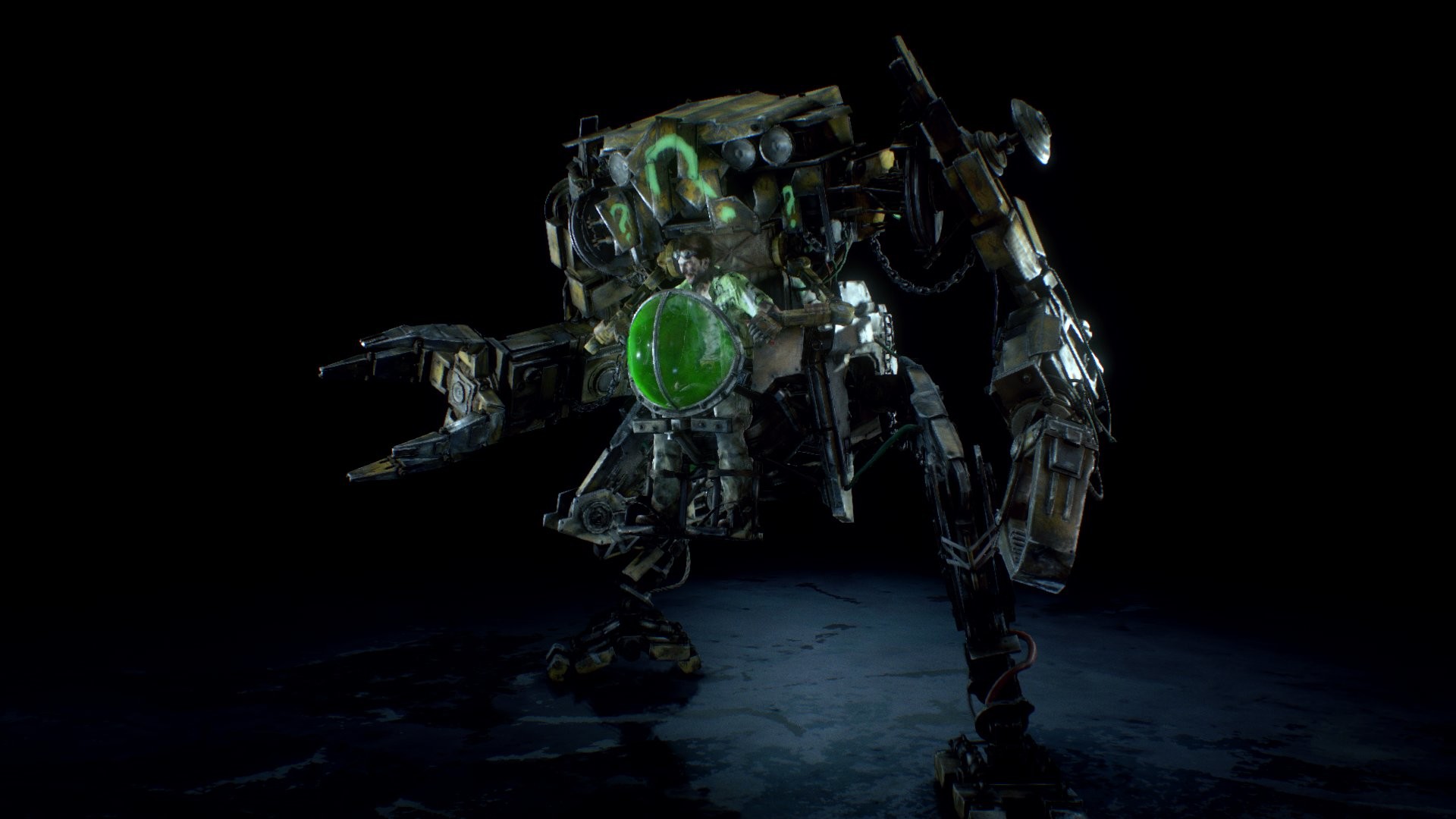Completionism has been an aspect of gaming culture for as long as speedrunning. Where some see how quickly they can blaze through a game, there are others that take an eternity picking it apart for secrets and collectibles. They’re the people responsible for wiki entries and walkthroughs, teaching others to follow in their footsteps.
Developers have long catered for this, littering their games with Easter Eggs for those attentive enough to uncover them. After all, even the most out of the way and unimportant corners had someone designing them. So, it’s only natural to put something there for those that take the time to appreciate that work.
Unfortunately, as the games themselves have become larger and more unwieldy, so has this practice. Across the enormous maps of modern titles, every hillock and mole-hill has some sort of collectible on it. It could be simple gameplay resources or pointless vanity items like the flags in the first Assassin’s Creed.

Source: In-Game Screenshot
How Completionism Has Evolved Alongside Games
Prior to the genesis of open-world games, any title boasting a narrative was generally a linear experience. The story would unfold throughout a delicately designed map. Naturally, this lent itself to the practice of completionism. With such a clearly defined area to search, it was a simple matter to uncover anything hidden away.
There were complications to this. Titles like Batman: Arkham Asylum required a great deal of backtracking, meaning they’d lock secrets away until you returned. Regardless, it was a manageable and rewarding task to complete such a title. Even in the Arkham series alone though, the impact of larger maps and more ambitious settings is visible.
The character references and audio logs remain, but the Riddler trophies become more numerous and disparate throughout the series. In Asylum and City, each was accompanied by a (mostly) fun puzzle to obtain it. But by Arkham Knight, there are over two hundred of them, using the same puzzles as previous titles. And there’s legitimate story content locked behind them. The Riddler cannot even be confronted until you find every last one.

Tom Parker @ Artstation.com
It’s no longer a fun challenge to be completed throughout gameplay. It’s a chore to be worked through after the game is over. Ubisoft maps are notorious for this, being littered with such a ridiculous amount of icons it’s damn near incomprehensible. Nobody wants to go across rooftops collecting feathers.
The point behind collectibles isn’t to fill maps with pointless crap to draw out the experience. It’s to create something enjoyable to accompany gameplay and to reward players that put the time in.
The Joy of Collecting
When handled poorly, as they are in most Ubisoft titles, these collectibles suck. They offer little reward or incentive and can shatter the pacing of an experience if you go out of your way to gather them. When handled properly, however, they can enhance an experience.
FarCry: Primal is a Ubisoft title like any other, littered with symbols and side-quests ad-infinitum. It has one distinct advantage over the majority of Ubisoft’s library though. They’re fun to complete.
Instead of feeling crammed into the experience to add hours, they have contextual relevance. Leaping to the defence of your tribe in the wilderness, or aiding its members, makes perfect sense – as does defiling the spiritual relics of rival tribes.

Source: In-Game Screenshot
It’s also handled far better from a design standpoint. Instead of being an enormous slab like most Ubisoft maps, the scenery is split by natural features. Mountain ranges and rivers split areas into manageable chunks, so completing each section feels much more feasible.
This is something Dragon Age: Inquisition handles very well too, spreading its content across numerous open worlds, rather than packing it into one. It makes gathering everything from each a much less daunting task. And it’s very satisfying to carve these experiences up and complete them.
Rewarding Honest Work
Aside from making them genuinely enjoyable to collect, the most important thing is to reward the effort put in. While completing a collection is rewarding on its own merit, most players won’t see the benefit unless they get something out of it. It sounds like an incredibly obvious thing, but so few titles grasp it.
Something like experience or resources the player earns throughout the course of gameplay does not constitute a worthwhile reward. It has to be something worth deviating from gameplay for.
Dragon Age: Inquisition rewards the collection of shards with the Temple of Pride. This houses a series of gameplay challenges that earn the player stat bonuses unavailable anywhere else. Resident Evil 2 rewards players that gather all of its Mr. Raccoon figurines with an unbreakable blade. Majora’s Mask had the fierce deity mask, attainable by finding all twenty non-transformative masks. All of which enhanced the gameplay in a way unattainable through regular play.
Fan-Art by Janice Scott
Rewards like this make it clear that collecting these things is an intended part of the experience. They’re not simply items scattered across a map to justify its size. However, this kind of reward is something rarely seen in games today. This is because achievements have almost entirely replaced unique gameplay rewards.
The Impact of Achievements
Perhaps the most obvious way the industry caters for completionism, achievements allow people to show off their in-game accomplishments to anyone and everyone.
To many players, this is far more rewarding, as it allows for social gratification of their accomplishments. No longer do you have to be alone in the knowledge that you completed a Dark Souls title. You can slap the achievement next to your name on Steam and make sure everyone knows it.
They can also serve as an excellent guide as to what completing a game looks like. For example, Dark Souls 3 requires you to gather every in-game item, beat every boss, unlock every ending and learn every single gesture before you’re deemed as having completed it.

Source: In-Game Screenshot
In terms of completing a game, it’s an incredibly useful feature. As for titles that don’t keep track of collections, it lets you know when you’re done. It also serves to let you know when the developer deems you’ve gotten everything out of the experience. Completion percentages can serve the same purpose, although in a far less practical manner. There’s no way to decipher what you’re missing.
How Completionism Can Affect an Experience
To those who feel the compulsion to complete a title entirely, it can affect how they experience it. Knowing there’s content you might’ve missed, or fearing there’s content you’ll miss if you progress, can cause a great deal of anxiety.
It can make you wary of any game’s actual story content, for fear it might shut you out of anything prior. Or worse, double the amount of content on the map. So, it can become an actual compulsion to do every single thing available before you make meaningful progress.
In a title that dumps countless collectibles on the map from the very beginning, this can ruin the experience. It can take you out of the story, ruin pacing, or make the game considerably more challenging. It’s even diminished incredible titles like The Witcher 3. Scouring the endless islands and oceans of Skellige in pursuit of question marks is a nightmare.

Source: In-Game Screenshot
While it doesn’t ruin an experience by any stretch of the imagination, it can tarnish it when handled poorly. The best experiences in this regard clearly signpost when you’ve gotten all you can out of your current level of play, as well as chopping up content into manageable bunches, or at least providing you the means to do that yourself.
Developers Shouldn’t Cater to Completionists
I should clarify that this article isn’t demanding games cater to a very peculiar minority. Simply that if they’re going to implement content that deliberately appeals to them, they should do it right. If you intend for your collectibles to be collected, make them enjoyable and feasible to collect.
Dragon Age: Inquisition is by no means a flawless game. I harp on about it so much because it did this so well. They made it incredibly satisfying to comb through each of the areas getting everything out of it. They did so in a way that didn’t overwhelm or impose. And most importantly, made it enjoyable. Because while it might seem stupid to some, those details can carry an experience to greatness for the right people.
If you liked this article, you can find more editorials from Culture of Gaming here. You can also follow us on twitter to know whenever we post a new article.













